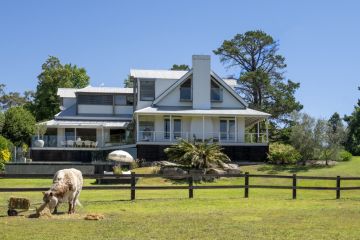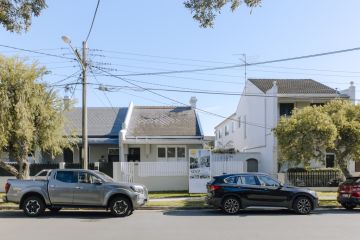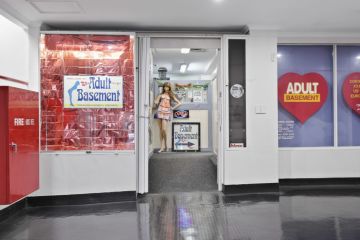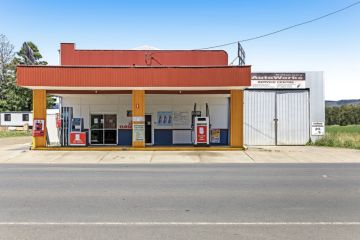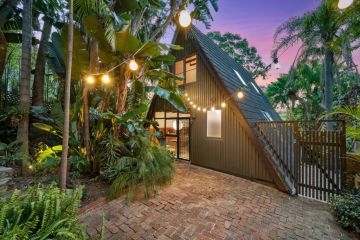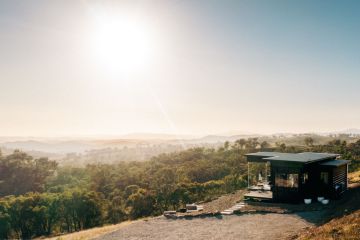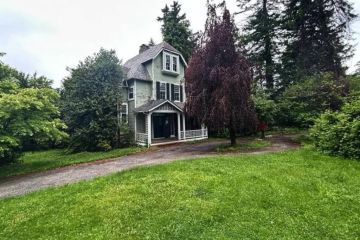Cheap Old Houses: The Instagram account dedicated to historic US homes under $100k

Australians addicted to property should get ready to have their hearts broken with Cheap Old Houses, an Instagram account curating historic American homes on sale at bargain-basement prices.
The houses featured are large, beautiful – with a bit of TLC – and so inexpensive even beleaguered, brunch-loving Millennials can afford them. For example, a stately three-bedroom, house in Morristown, New York, is on sale for $US18,000. In Decatur, Illinois, a colourful Victorian with seven fireplaces is on sale for $US99,900.
These are tantalising prices, especially for first time home buyers struggling to get their foot in a hyper-competitive market.
Cheap Old Houses is the brainchild of Elizabeth Finkelstein, a columnist for Country Living magazine and the founder of Circa, a listings site for heritage properties on sale in the US.
Finkelstein, who has a master’s degree in historic preservation, came up with the idea for Circa when her parents decided to sell her childhood home, an 1850s Greek Revival house they had lovingly renovated. But they felt the listings agents didn’t prioritise the appeal of a heritage home.
“The realtor wanted to know things like how many square feet it had, and did it have a master bathroom, and was the basement finished,” says Finkelstein. “The charm of the house wasn’t going to fit into a check box.”
- Related: Australian housing market hits $6.9 trillion
- Related: Busting the myth of Millennials, homes and holidays
- Related: First-home buyers now use ‘Bank of Mum and Dad’
And later, when Finkelstein and her husband wanted to buy their own house, they grew tired of sifting through “zillions of cookie-cutter homes to find a diamond in the rough”. After launching Circa in 2013, Finkelstein created the @cheapoldhouses Instagram account to highlight the dirt-cheap fixer-uppers Circa’s readership loved most.
The houses featured on the account are almost always under $US100,000, though Finkelstein says they have “good bones”. Most of them are in the Midwestern or southern states, where real estate is generally cheaper, or in locations many home buyers would consider unappealing.
“In general, the houses either need a lot of work or are in places that are either very remote or, for lack of a better term, ‘up and coming’,” she says. “But I’m OK with that. I love posting homes for sale in less than desirable places, because surviving beautiful architecture is often a saving grace for these places and their only hope.”
Finkelstein says Circa targets Millennials, a generation priced out of the market in most major cities around the world. They are also infatuated with things that look old; think vintage clothes, vinyl records and grainy Instagram filters.
“This is a very design-savvy generation that wants to define themselves as unique and individual. Nothing does that better than an old house,” she says.
Circa focuses on American properties. But there are plenty of cheap houses in Australia too.
A search for houses under $150,000, roughly the Australian equivalent of Cheap Old Houses’ $100,000 maximum, reveals about 4000 homes for sale. Most of them are in rural areas, such as this $65,000 deli and one-bedroom residence in Broken Hill, NSW, or this $65,000 home in Coober Pedy, South Australia. An old hall in Queenstown, Tasmania, has a magnificent brick fireplace and a $59,000 price tag. Of course, most of these homes require extensive renovation or rebuilding.
 A $65,000 deli and one-bedroom residence in Broken Hill, NSW. Photo: Broken Hill Real Estate
A $65,000 deli and one-bedroom residence in Broken Hill, NSW. Photo: Broken Hill Real Estate
A similar search on US real estate site Zillow, however, turns up nearly 1 million results, and the houses on offer are generally larger and in better condition than those in Australia.
This has a lot to do with population and supply. Australia and the US are about the same size geographically, though the US has more than 325 million residents compared to Australia’s 24 million.
Brett Evans, the managing director of Atlas Wealth Management, which provides financial advice to Australian expats, says there are other reasons the American property market has so many cheap properties.
“In Australia, we’ve got a very immature property market that is clustered around certain areas,” says Evans. “The US population is quite geographically spread out.”
As a result, he says, the US has more infrastructure – regional hubs and transport networks – to maintain rural communities throughout the country.
Americans have also gone through economic downturns, such as the GFC, far more severe than those in Australia.
“Australia has almost been on a bull run since the 1970s and the 1980s,” says Evans. “We haven’t had any real push that has shaken the values out.”
 A $65,000 home in Coober Pedy, South Australia. Photo: Lin Andrews Real Estate
A $65,000 home in Coober Pedy, South Australia. Photo: Lin Andrews Real Estate
Evans regularly advises Australian clients interested in investing in the US property market. But he doesn’t recommend hopping on a plane to buy an American fixer-upper without serious examination of the local property market.
“Often they’re so cheap because there is little to no economic growth in those towns,” he says. “There’s a risk.”
But for Finkelstein, it’s not about profit.
“There is something very visceral about the feeling you get when you walk into a historical home and feel a connection to something bigger,” she says. “I’m not a religious person, but I swear there is something almost spiritual about this. You drive by a big fixer-upper by the side of the road and feel this almost desperate desire to save it.”
We recommend
We thought you might like
States
Capital Cities
Capital Cities - Rentals
Popular Areas
Allhomes
More
- © 2025, CoStar Group Inc.
